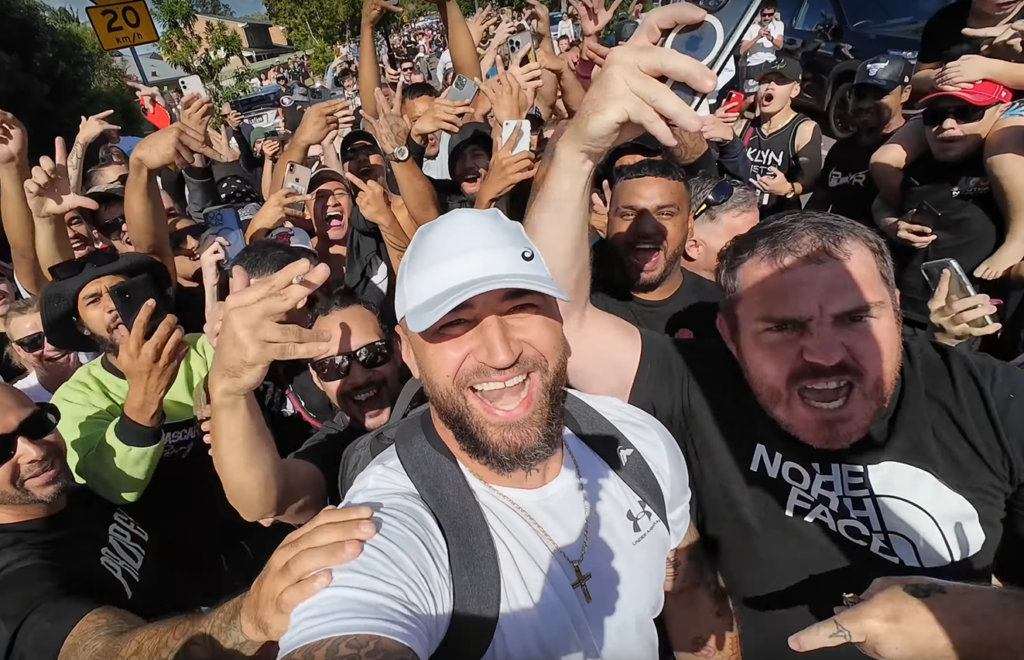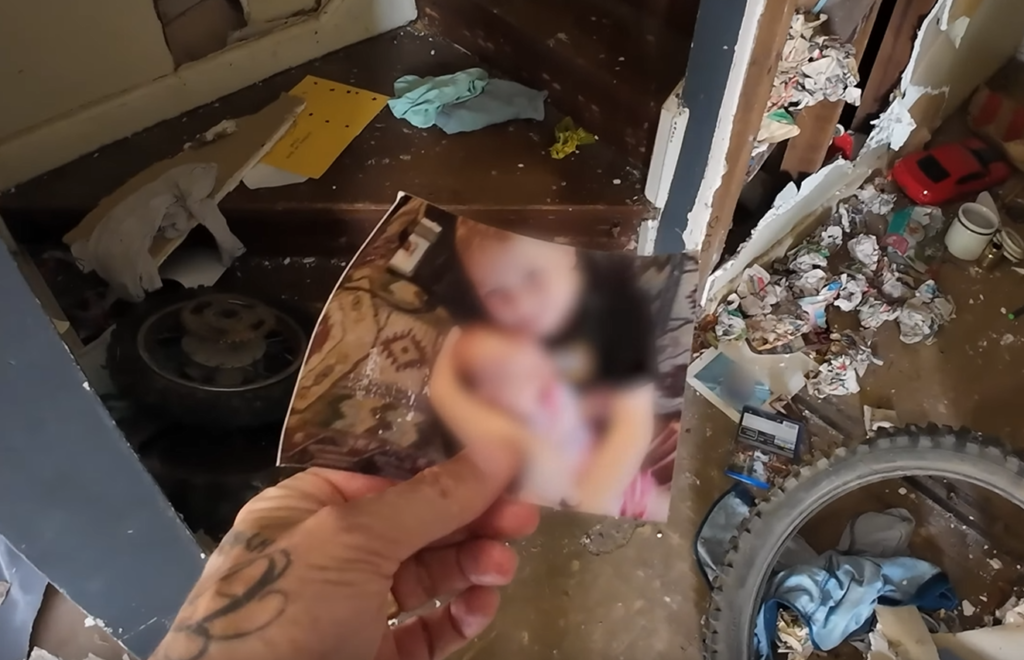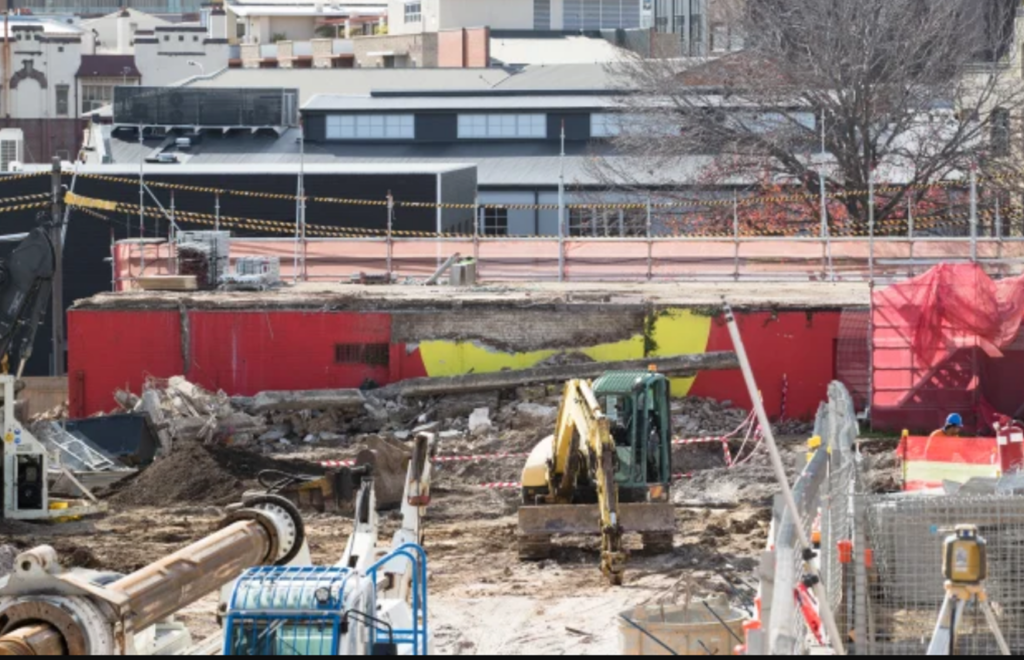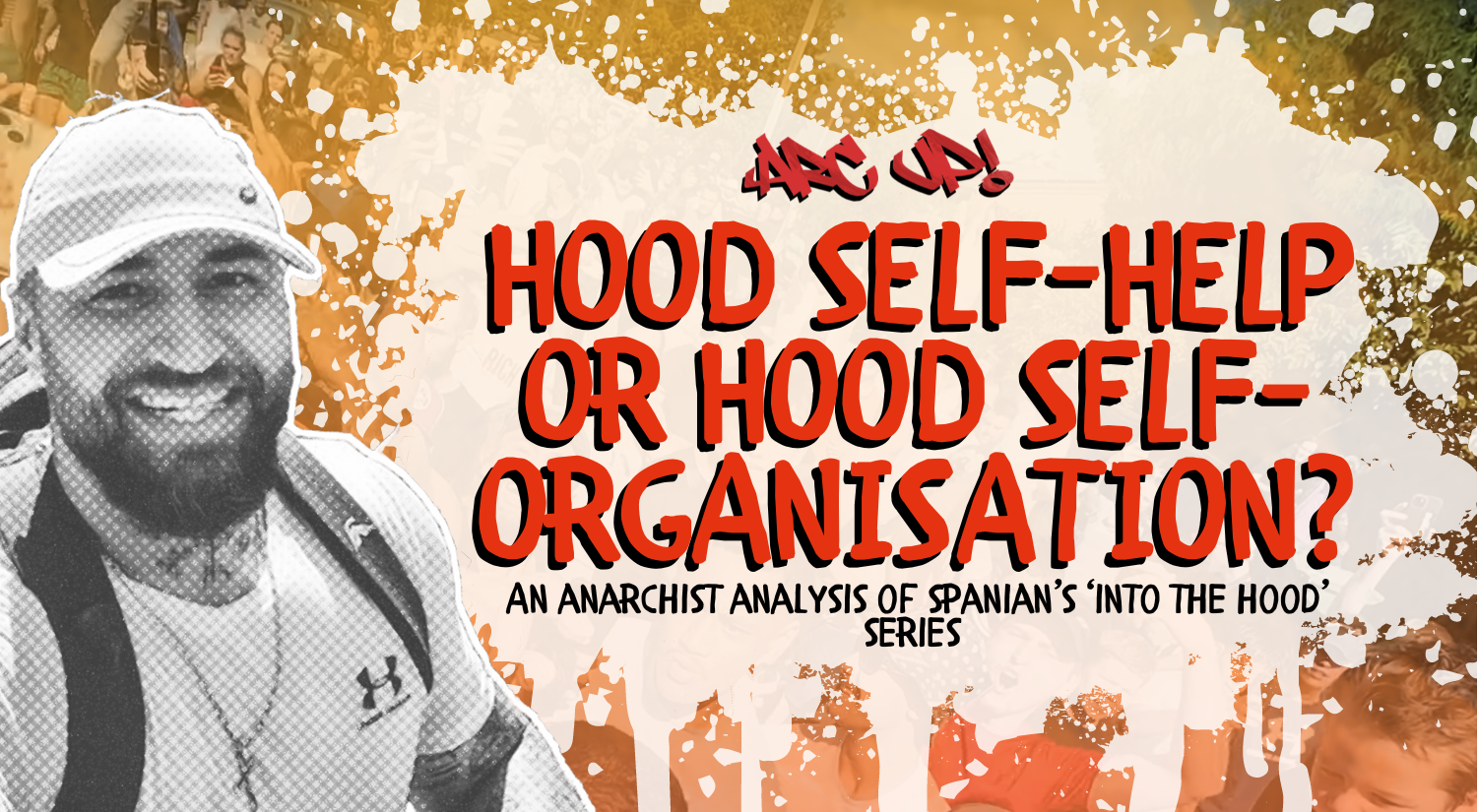CW: This article contains images of people now deceased.
There’s an upsurge in ex-career criminals taking to social media to tell their stories and to warn others against following in their footsteps. From Spanian to Dave Obeda, Gaz Wright and others; the message is clear. Crime costs more than it pays, and according to the late Russel Merser — an ex-career bank robber turned content creator — there’s just too many CCTV cameras to bother. These men advocate letting go of enabling relationships, getting healthy and clean, and finding aboveboard ways to be financially stable.
Whatever you think of Spanian and his American-import conspiracy theories and culture war posts, you just have to look at the hundreds of locals flooding the streets, sharing stories, doing burn outs and giving teary-eyed thanks to Spanian in his ‘Into The Hood’ series to see that his life lessons, or at least the stories of his crimes and jail time, have touched many thousands of people who grew up in the housing areas and ghettos around the country.
As Anarchists, we want to highlight the collective strategies used in the hood to fight the systems that keep people poor, instead of the individual measures they might take to escape poverty. Hood self-help has been covered, we want to talk about hood self-organisation.

THE ISSUES:
In these videos, we witness a load of issues that self-help is powerless to defeat. We see the effects of apartheid-style laws that affect First Nations people indiscriminately in the Northern Territory and Alice Springs, and the ongoing effects of colonisation on Aboriginal communities. We hear about pedophile rings active in juvenile detention facilities. We see the basics welfare card that restricts the purchase of goods to approved chains only. We see juvenile detention centers that are built next to public schools, where children are groomed by active gangs into throwing tennis balls filled with drugs into the juvy for distribution. We hear about crime waves and poverty lasting for decades, that were started by major employers closing up factories in communities, leaving locals with no where to go. We see that public housing areas are purposefully ‘run down’ so that developers can purchase the land for cheap and move higher income communities in, even erasing history by changing the names of communities to rid them of their infamous reputations. We hear from Airds Aboriginal Elder, Uncle Dave that funding and resources don’t reach their communities, because it all gets taken by ‘puppets’. Adequate funding of these communities would imply their permanence in the area, which would be against the interests of predatory developers.

Unseen are the forces pulling people gravitationally towards poverty and incarceration or keeping them there. Supermarket giants legally price-gouging food, which reaches endemic levels in remote Aboriginal communities, the investors buying housing supply to drive up the price of housing for profit, governments suppressing wages by crushing unions while the cost of living skyrockets. Most people in so-called Australia wouldn’t know that First Nations people are 17 times more likely to end up in prison than non-First Nations people. Nor do most people know that private prison executives profit from the criminalisation of people who turn to crime to survive.
Private prison companies like Serco and GEO Group invest in traffic cameras and electronic monitoring technology to bring more people and revenue to their prisons. Many require prisoners to work in food prep, laundry and cleaning so execs can pocket more of the funding granted through sometimes 10 to 20 year billion dollar contracts with the State. Private prison execs also lend their prisoners’ labour to other private businesses for as low as 60c per hour. Prison labour is used in agriculture, furniture, Aboriginal art and craft, product refurbishment, building projects, laundry services, pack and assembly, food services, technology, housing and even prison construction itself.
If that doesn’t sound nightmarish enough, in WA, these companies cut the state government 10% of the revenue made by this exploited prison labour. Serco also pays a lobbying group to advise members of the Liberal Party in WA, and has ex-employees occupying important roles in Corrective Services departments across the country. In California, Serco supported the tree strike laws and other tough incarceration laws now in effect.
THE ROOT CAUSE:
Any system with economic and social development solely motivated by profit is bound to result in tyranny, coercion, exploitation, colonisation, war, slavery, poverty and death. This is demonstrated by the persistence of homelessness and hunger around the world. Though these issues are both possible and pressing to solve, they persist due to not being profitable.Self-help focuses on how the individual can change themselves to survive or adapt to a fucked system. While there exists practical self-improvement advice that’s clearly beneficial to people, we feel a conversation also needs to be had about how we can uproot the system that causes our problems, instead of just treating the wounds it inflicts on our people. That is the challenge and goal of Anarchists.
HOOD SELF-ORGANISATION:
Many of the ways hoods can come together to fight their common enemies was present in the long-standing fight to save the Block in Redfern, Sydney over its lifetime. Houses abandoned by absentee landlords in the 70’s were occupied by displaced Aboriginal people seeking shelter. Unbeknownst to them, the Block was about to became a battleground in the fight for land rights for First Nations people in this country.
In 1971, development company IBK purchased the homes and evicted the squatters. Campaigning by the Redfern First Nations community eventually led to the company allowing residents to remain in the homes until development commenced. Though this was backhanded generosity, as the homes were completely boarded up and gutted for the impending demolition.
COMMUNITY SOLIDARITY:
Because the houses were unlivable, the Block wouldn’t have made history without community support and solidarity. Various community members deemed ‘the mop and bucket brigade’ came in to furnish and clean the houses for the occupants. The Brown Nurses, a Catholic Order, supplied food, blankets and toiletries as well as assistance with medical needs. Accommodation and support was also granted by a local Redfern Presbyterian church.
Union workers in the Builders Laborers Federation answered the call of the Redfern community and erected doors and did repairs on the houses. Union plumbers fixed the plumbing, and union electricians hooked up electricity for free. Upon inspection by the notoriously strict South Sydney Council, the houses were deemed fit to live in.

EVICTION DEFENSE:
Soon after, as IBK announced their development would commence, the squatters, now with actual homes to lose, buckled down to resist police evictions. Every person on the Block stood strong against police and none gave up under the threat of arrest.
If tenants are able to engage the broader community and organise ways for supporters to show up at the times police arrive to conduct evictions, there is a good chance that an eviction deadline can be postponed. Unfortunately, the police always come back. Often a war of attrition starts between tenants and their supporters and the police. In these cases, serious organisation and rostering of shifts are required to maintain a constant presence at the property and the ability to snap mobilise supporters to come and block entry. Sometimes the police will let the community get riled up for a week, and then roll through when the initial momentum has waned.
Lacking the numbers to keep the police from evicting them longer term, eventually the tenants requested unions place a ban on any demolition of the Block.
MILITANT UNIONISM:
The unions stepping in to make homes livable, not for developer profit, but for the direct and expressed needs of community, was an inspiring vision of the kind of future Anarchists fight for. However, the unique role construction unions have that exercises their power directly against developers and capitalists is denying the labour they need to carry out demolitions and construction, etc. They exercise this power using a tactic called ‘Green Bans’.
In the 70’s, housing groups, community action groups and conservationist groups called upon unions to place bans on workers touching certain jobs. It could be jobs for bosses that were particularly unjust, or jobs in demolishing public or low-income housing, or in developing popular parkland against community’s wishes. Through green bans these unions were able to enforce rent controlled housing for low-income families and protect communities from greedy developers. The will of communities was able to be enforced with the might of principled, organised and militant unionists.
Understanding their unique ability to have their demands met by stopping capitalism in its tracks, past unionists won the 8 hour work day, the weekend, equal pay, the minimum wage and have been instrumental in fighting against wars and fascist regimes.

THE FOLLY OF GAMING THE SYSTEM:
One strategy employed by the community around the Block was to form the Aboriginal Housing Company in order to apply for funding to purchase the homes, and provide low-income housing for the First Nations community in Redfern. In 1973, this started out a noble venture, and one that received funding from the Whitlam government to purchase the Block, and employed mainly Aboriginal workers to conduct renovations for tenants. Though over the decades the AHC succumbed to the will of the system they lent on for funding and approval.
Around 2010, the Aboriginal Housing Company became the landlords ordering the evictions of their own community from their homes on the Block, with the vague promise that by building accommodation for 154 non-Aboriginal students they’d be able to fund low-income housing for about 60 Aboriginal tenants, substantially less than the Block housed originally. The development was only possible in partnership with Deicorp, a non-Aboriginal development company.
With rents rising in the area, some tenants feared they wouldn’t be able to afford to live in the new accommodation once it was built. A source from the NSW Labor government at the time reported that money had been withheld from the AHC because of concerns that re-building affordable homes on the Block would create a ‘new urban slum’ harking back to the 2004 era of the ‘Redfern riots‘ that were sparked by the death of TJ Hickey during a police chase, and years of over-policing and discrimination in the area.

To maintain the funding they needed, the AHC committed to carefully screening tenants to keep out ‘drugs and crime’, which meant that the people that needed low-income housing the most were likely going to be denied it. As shown in the hayday of the Block, housing and the stability and community it brought tenants was the first step in a process of reducing any existing reliance on drugs and crime to get by.
Depending on whether you believe the AHC actively sold their people out for profit, or was whittled down by the need to appease the system in order to retain funding, the reminder for us all is that we have to build power independent of the system, and not kid ourselves that the oppressive colonial capitalist system can be used as a tool of emancipation. And though the development was resisted again by the Redfern tent embassy in 2014 and other community groups, the ‘Pemulwuy’ project is now completed. The huge development is adorned with Aboriginal art and cultural markers of resistance, but it is a undeniably the product of the colonial capitalist system the AHC was set up to resist.

SOLIDARITY WITH SUPER-MARGINALISED COMMUNITIES:
2016 saw prisoners in Victoria’s Barwon Prison strike against their extreme exploitation. $9 a day was given to inmates working in reputably the toughest prison in the country. They went on strike to demand higher payment to cover the increasing costs of living inside the prison. The state’s retaliation was to say that the public were outraged the prisoners felt entitled to strike, and then to lock the striking workers in confinement, effectively ending their action.
Though there are successful prison strikes to speak of, where there is particularly heinous exploitation and vulnerable communities, outside solidarity can be crucial. Without outside solidarity from the unions, the Block may have been snuffed out before it began.
Our vision is not that every group has to fight for their own emancipation alone and unsupported, just like it is not our vision that each individual fight to become financially stable and drug-free alone and unsupported. Our vision is that we can build power that involves all of our demands and fights for all of us. Workers refusing to build new prisons, and placing bans on new prison developments could be a pressure point that leads to positive prison reform, and could fortify the power of striking workers inside prisons. Teachers unions could take action in under-funded schools until improvements are made. The possibilities are endless for other industries to act within communities or in solidarity with the expressed wishes of communities in determining their own destinies.
While Serco’s interests are pushed through political influence, through surveillance technology and within prisons themselves, we need a counter-power capable and organised enough to take a fight to these corporate grubs. To push back against the oppression of already marginalised communities for the gain of the already super-rich.
If we live in the hood, that requires us getting together, forming demands and support systems, finding out where our power lies to achieve those demands, and what solidarity we need from elsewhere to bolster our own power. If we don’t live in the hood, our role is to figure out how our power and role in the system can be used to the advantage of more marginalised people than us, and how we can do so in consultative and collaborative ways. This is how we begin to form a tide that raises all ships, not just a handful of highly motivated, charismatic and capable ships able to escape the hood.
CONCLUSION:
Airds elder, Uncle Dave finishes his interview with Spanian by saying community development and resourcing works ‘from the top, not the bottom up. They should be working from the bottom…’ We agree that power should work in the opposite way it does under Capitalism. Rather than power resting with developers to swipe away whole communities of people they haven’t met, or private prison CEOs seeing people’s suffering as financial opportunities, power should begin with communities to determine what they need to be safe and supported, and flow upward into services and amenities they expressly deem useful that enrich and improve their lives – this is the Anarchist vision.
When the rebellious spirit of people who grow up in the hoods of so-called Australia is coordinated and focused toward ending the structures that pull people and families toward poverty, crime, trauma, drugs and the prison system, a lot could be achieved. History proves that we don’t have to just be victims of circumstance, responsible only for how we react to unchangeable systems that seek to dominate us. In understanding that our domination and exploitation is the necessary side effect of their luxury and wealth, we will find our power.
Freedom and justice for all hoods everywhere.
